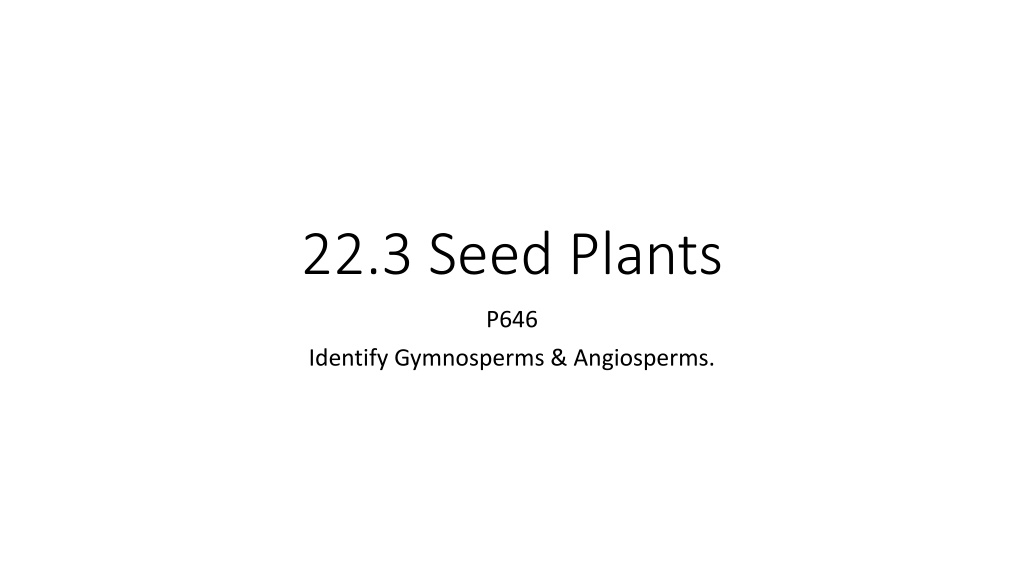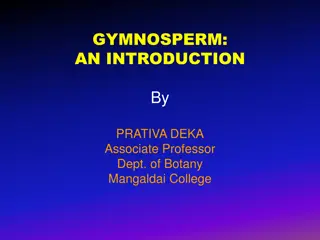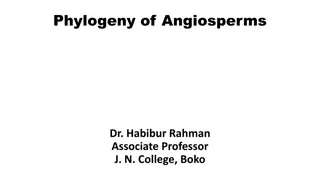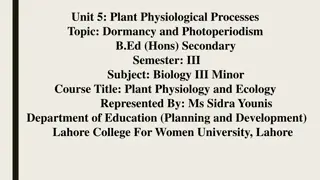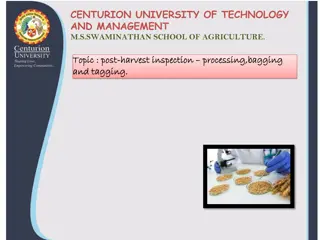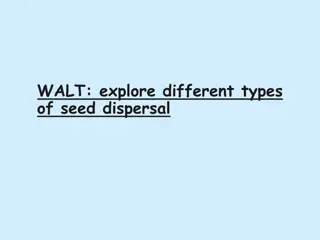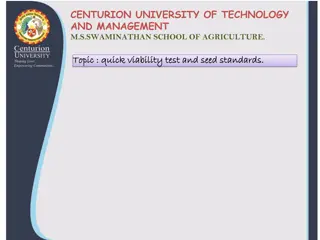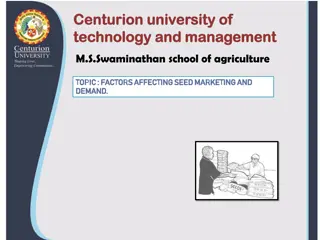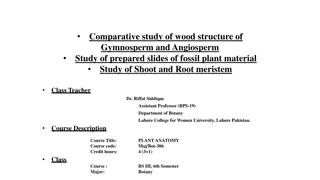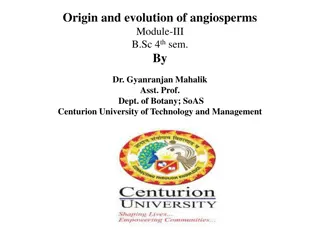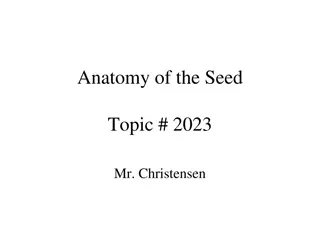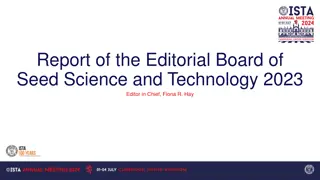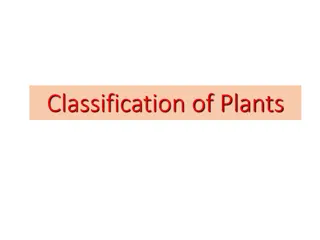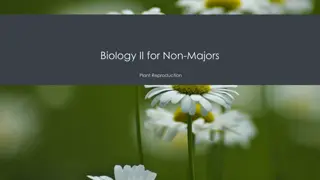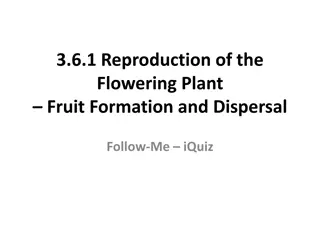Understanding Seed Plants: Gymnosperms and Angiosperms
Learn about the adaptations that allow seed plants to reproduce without open water, the importance of seeds, and the differences between gymnosperms and angiosperms. Explore how gymnosperms carry out fertilization without water in their life cycle. Images included.
Download Presentation

Please find below an Image/Link to download the presentation.
The content on the website is provided AS IS for your information and personal use only. It may not be sold, licensed, or shared on other websites without obtaining consent from the author. Download presentation by click this link. If you encounter any issues during the download, it is possible that the publisher has removed the file from their server.
E N D
Presentation Transcript
22.3 Seed Plants P646 Identify Gymnosperms & Angiosperms.
The Importance of Seeds Q: What adaptations allow seed plants to reproduce without open water? A: Adaptations include 1)a reproductive process that takes place in cones or flowers, 2)the transfer of sperm by pollination, and 3)the protection of embryos in seeds. Seed=a plant embryo and a food supply, encased in a protective covering.
Cones & Flowers Gymnosperms- groups of seed plants that bear their seeds directly on the scales of cones. Angiosperms-groups of seed plants that bear their seeds within a layer of tissue that protects the seed; flowering plants.
The Life Cycle of a Gymnosperm Q: How does fertilization take place in gymnosperms in the absence of water? A: In gymnosperms, the direct transfer of pollen to the female cone allows fertilization to take place without the need for gametes to swim through standing water.
